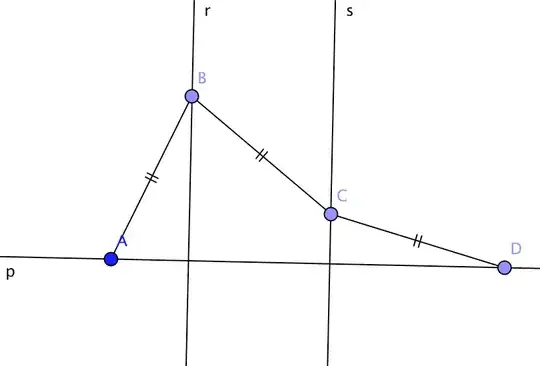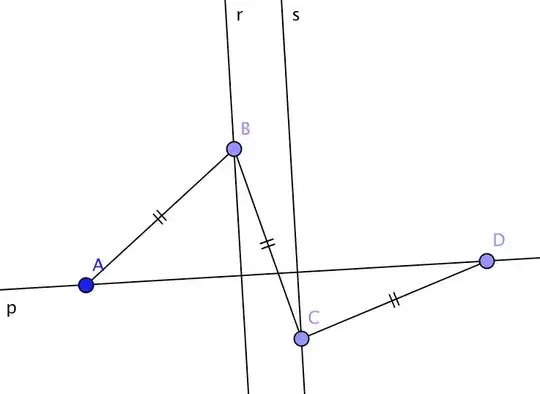Given two parallel lines $r$ and $s$, line $p$, perpendicular to both, and points $A$ and $D$ on different sides of $p$ with respect to the parallel lines, how can I prove the existence of two points, $B$ and $C$, respectively on $r$ and $s$, such that segments $AB$, $BC$ and $CD$ are congruent?
I'd prefer a constructive proof, for it to be a more general solution useful to solve this question too. (also, geometric proofs are fun)
Here are two examples I constructed in reverse (I fitted the lines to the points and not viceversa):


